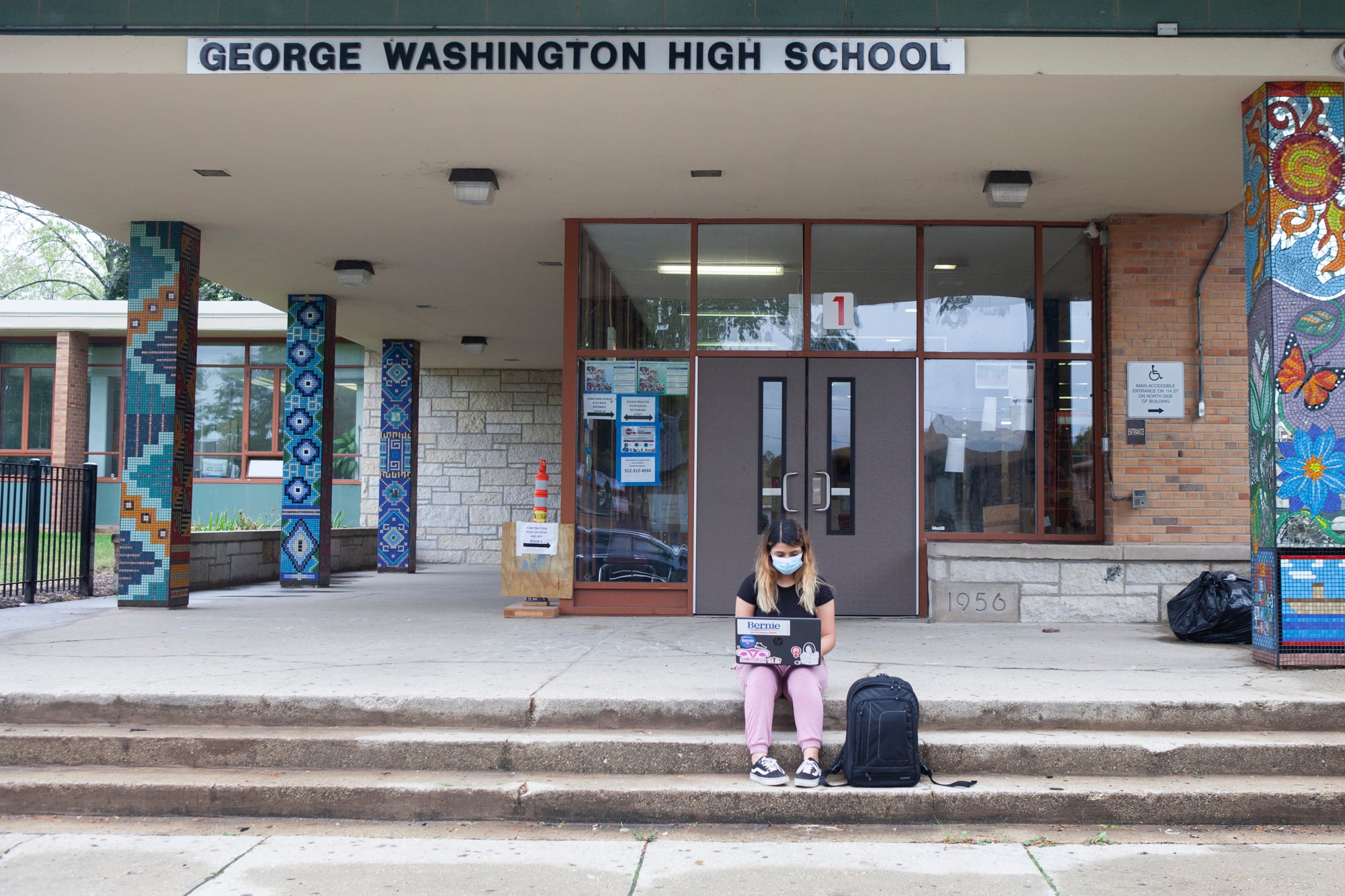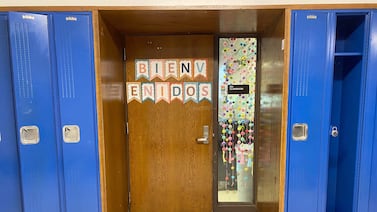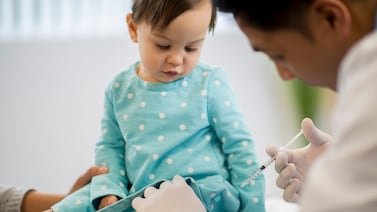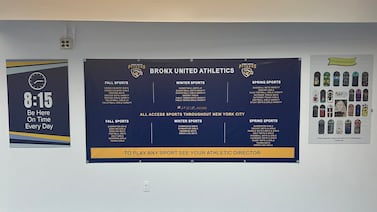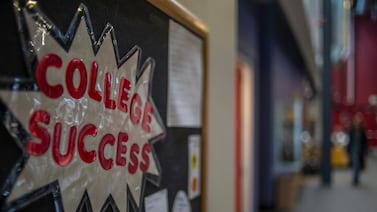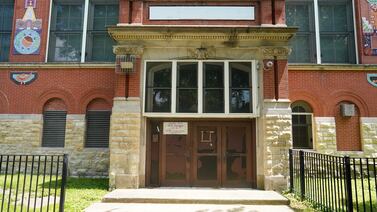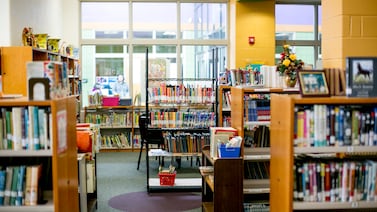About one-third of elementary students in Chicago Public Schools plan to return for in-person instruction in early 2021, according to figures released Wednesday.
The school district is predominantly Black and Latino, but a disproportionate number of students returning are white. About 77,000 students are coming back.
The figures, which were announced during the monthly board meeting, show that 23% of returning students are white, compared to 39% who are Latino and 30% who are Black. The district as a whole is 11% white.
That is in line with other school districts, such as New York City, where a disproportionate share of white families also sent their children back for in-person learning.
Still, the numbers show that thousands of families favor returning to school buildings, even as the COVID-19 positivity rate in Chicago remains in the double digits, and the teachers union continues to challenge the plan.
“Every single family has a choice in this plan,” said schools chief Janice Jackson Wednesday.
District officials have argued that widening academic disparities are a key reason to push for reopening school buildings in early 2021, and said remote learning simply doesn’t work for all students.
Even as a disproportionate number of white families want to return to in-person learning, Jackson noted that, as more than 80% of district students are Black and Latino, reopening school buildings offers tens of thousands of Chicago students a chance to learn in schools.
But data released by district officials Wednesday show the majority of Chicago’s Black and Latino families, as well as vulnerable groups, such as students experiencing homelessness and students in special education, opted for remote learning next semester.
Of the 16,944 students who are in pre-kindergarten or have complex disabilities and are first in line to return on Jan. 11, 38.2%, or 6,470 students, have opted for in-person learning. The majority, 57.8% or 9,786 students, said they would continue learning remotely. About 4%, or nearly 700 students, had not yet replied.
Another 191,055 students in kindergarten to eighth grade will be eligible to return Feb. 1. Of those students, 37% of families chose in-person learning, while more than half, 59%, said they would continue to learn at home.
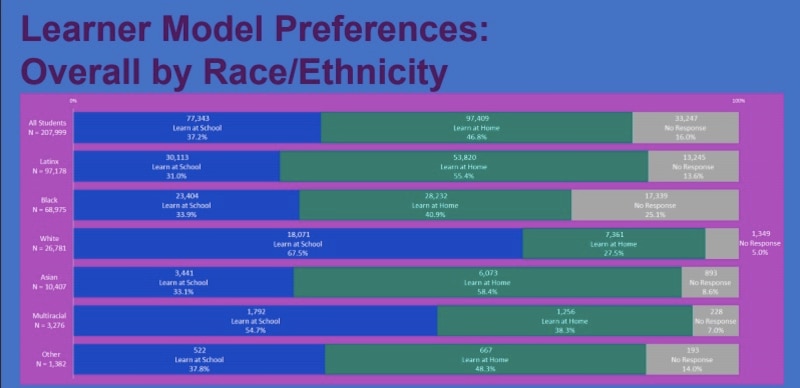
Those numbers only shifted significantly when they were broken down by race. Around 67% of white families, and 54.7% of multiracial families, who represent 3,276 students, said they’d send their elementary school children back for in-person learning, compared to 33.9% of Black and 31% of Latino families.
Still, those figures may not show the final number of students who return to buildings this winter, as families can opt out of in-person learning at any time. Families can only opt into in-person learning for the next semester, in April.
The district also announced it would launch a high school reopening task force to make a plan for returning older students to buildings.
With only about three weeks until teachers will be expected to return to buildings, the discussion at Wednesday’s board meeting ran the gamut of lingering questions on school reopening.
Board members grilled district leaders about the metrics they will use to determine whether COVID-19 spread is low enough to reopen schools. Until recently, the district used a seven-day average positivity rate to assess community spread, but officials said more recently that, in consultation with the city’s health department, they are now choosing to focus on the number of days it takes cases to double (below 18 if considered a greenlight for reopening).
Marielle Fricchione, a doctor with the Chicago Department of Public Health, told board members Wednesday that, while there was no clear national metric for when it was safe to reopen schools, whether a COVID-19 outbreak was controlled or not was a key factor.
“When we saw a change from controlled to uncontrolled transmission, and then from uncontrolled transmission back to control transmission, it was around a doubling rate of 18,” she said.
Fricchione also said, with the first COVID-19 vaccine distributed in Chicago this week, teachers could be within the first few tiers of essential workers eligible for the injection. Gov. J.B. Pritzker has not yet spelled out where teachers would fall in the state’s vaccination plan, which prioritizes health care workers and long-term care facilities.
How far the union is willing to go to challenge the plan remains an open question. In response to board member questions, school officials said Wednesday that they had met with union officials 43 times, and still hoped to secure a written agreement with the union. However, they were first and foremost determined to reopen schools for vulnerable students.
Union leaders, speaking both at an early morning press conference and at public comment, said again Wednesday they disagree with the district’s reopening metrics, and want a written agreement before any return to in-person learning. Among the union’s recently released list of detailed demands: that the district only open schools if the COVID-19 weekly average positivity rate is at 3% or lower.
Even as schools move toward reopening, union president Jesse Sharkey said the union was far from done making its case. Not only will they continue to appeal to parents and labor courts, but “all options are on the table,” likely meaning a possible strike, Sharkey said.
The Illinois Educational Labor Relations Board is expected to hold a hearing Thursday morning on the union’s request to stop in-person learning until they have a written reopening agreement.
Parent comments were also sharply split on the question of reopening.
Several parents, including one who said “my child will happily return to class,” said they were excited the district would offer the option of in-person learning. They also said some parents were afraid to speak out because of opposition from teachers.
Others said they would not send their children back to in-person learning because they were worried about their ability to wear masks for hours, or that asymptomatic spread inside schools could go undetected.


